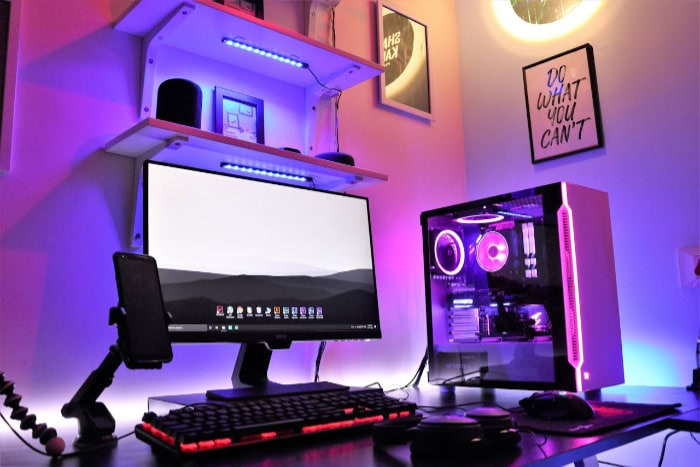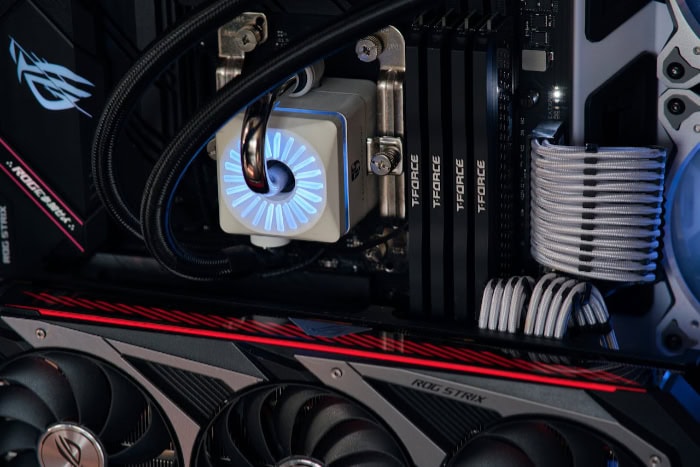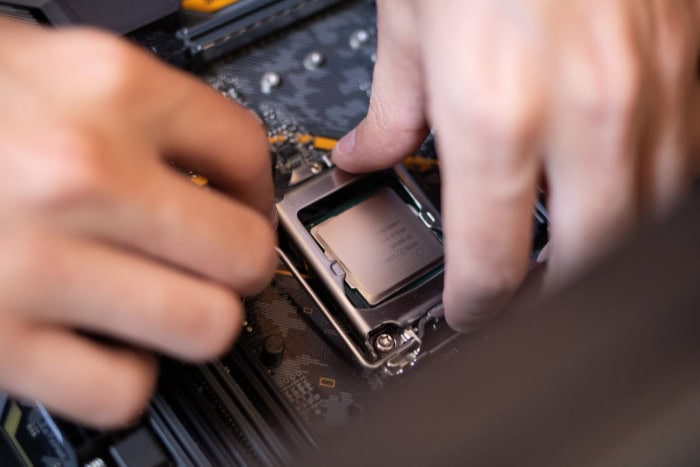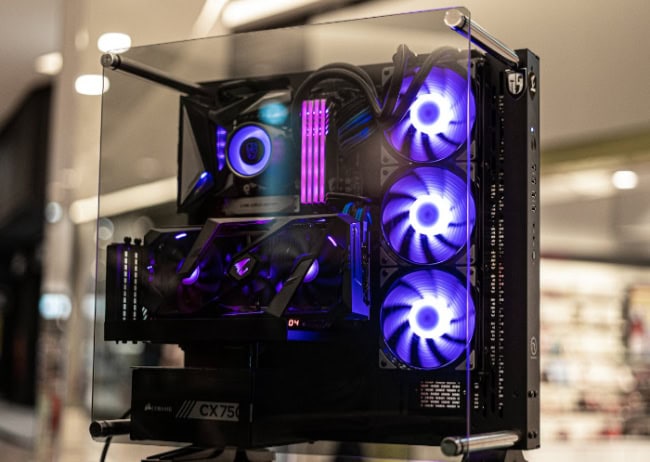Should You Buy or Build a Gaming PC? The Honest Truth

Gaming PCs stand at the heart of every enthusiast's setup, offering unparalleled performance and customization. As technology advances, the choice between buying a pre-built system or constructing your own becomes increasingly complex.
Both options present unique advantages and challenges, catering to different needs and skill levels. For newcomers and seasoned gamers alike, this decision can significantly impact gaming experiences and long-term satisfaction.
Factors such as cost, performance, technical know-how, and future upgrades all play crucial roles in making the right choice.
Cost Considerations
The financial aspect of acquiring a gaming PC often plays a crucial role in the decision-making process. Comparing the costs of building versus buying a pre-built system involves examining both immediate expenses and long-term value.
Initial Costs
Building a gaming PC from scratch typically offers more control over your budget, allowing you to prioritize components based on your specific needs. You can allocate more funds to critical parts like the GPU and CPU while economizing on less essential elements.
This flexibility often results in a more powerful machine for the same price as a pre-built alternative.
However, pre-built systems can sometimes be more cost-effective upfront, especially during sales or promotional periods. Manufacturers often secure bulk discounts on components, potentially passing these savings to consumers.
Additionally, pre-built PCs come with Windows pre-installed, saving you the cost of an operating system license.
It's worth noting that building your own PC requires purchasing all components individually, which can add up quickly. You'll need to factor in the cost of a case, power supply, motherboard, CPU, GPU, RAM, storage, and cooling solutions.
Don't forget peripherals like a monitor, keyboard, and mouse if you don't already own them.
Long-term Value
While the initial cost is important, considering the long-term value of your investment is equally crucial. Custom-built PCs often offer superior long-term value due to their upgradeability and the quality of individual components.
When building your own PC, you have the freedom to choose high-quality, durable components that can withstand the test of time. This approach can lead to a longer lifespan for your system and potentially lower repair or replacement costs in the future.
Moreover, the ability to upgrade specific components as technology advances or your needs change can extend the useful life of your PC without requiring a complete system overhaul.
Pre-built systems, while convenient, may use proprietary parts or lower-quality components to reduce costs. This can limit your upgrade options and potentially lead to earlier obsolescence.
However, some high-end pre-built PCs do use standard components, offering a middle ground between convenience and future upgradeability.
Budgeting Tips
Allocating your funds effectively can help you maximize the performance of your gaming PC within your budget constraints. Here are some practical tips to consider:
- Prioritize the GPU and CPU: These components have the most significant impact on gaming performance. Allocate a substantial portion of your budget to ensure you get the best possible options within your price range.
- Don't skimp on the power supply: A reliable, efficient power supply is crucial for system stability and longevity. Invest in a quality unit from a reputable manufacturer.
- Balance your RAM and storage: Aim for at least 16GB of RAM for modern gaming. For storage, consider a combination of a smaller SSD for your operating system and frequently played games, paired with a larger HDD for general storage.
- Consider future upgrades: If building, choose a motherboard that supports future CPU and RAM upgrades. This can save you money in the long run by extending the lifespan of your system.
- Look for bundle deals: Whether building or buying, keep an eye out for component bundles or pre-built system deals that offer good value for money.
- Set a realistic budget: Determine how much you're willing to spend and stick to it. Remember to factor in the cost of peripherals and any necessary software.
Customization and Performance

Customization and performance are two critical aspects that often drive the decision between building and buying a gaming PC. The ability to tailor a system to your specific needs can significantly impact your gaming experience.
Component Selection
Building your own gaming PC provides a level of freedom in component selection that pre-built systems simply cannot match. This flexibility allows you to create a machine that perfectly aligns with your gaming preferences and budget constraints.
When building a custom PC, you have complete control over every component, from the processor and graphics card to the case and cooling system. This means you can prioritize certain aspects of performance based on the types of games you play.
For example, if you're into fast-paced first-person shooters, you might opt for a high-refresh-rate monitor and a powerful GPU to match. Alternatively, if you prefer strategy games or MMOs, you could allocate more of your budget towards a CPU with strong multi-threading capabilities.
Moreover, component selection extends beyond just performance. You can choose parts based on aesthetics, noise levels, or power efficiency.
Want a silent PC? You can select quiet cooling solutions and a power supply with a zero-RPM fan mode. Prefer a visually striking build? You can opt for components with RGB lighting and a case with a tempered glass side panel.
This level of customization also allows you to future-proof your system more effectively. By selecting a motherboard with ample expansion slots and support for next-generation components, you can ensure your PC remains upgradeable for years to come.
Performance Optimization
Custom builds excel in performance optimization because they can be tailored to specific gaming needs. This level of customization allows for a more efficient allocation of resources, resulting in better overall performance for your preferred games and applications.
For instance, if you primarily play graphically demanding games, you can invest more in a high-end GPU while opting for a mid-range CPU. Conversely, if you enjoy CPU-intensive strategy games or plan to use your PC for tasks like streaming or video editing alongside gaming, you might prioritize a powerful processor and ample RAM.
Custom builds also offer the advantage of optimized cooling solutions. You can choose between air and liquid cooling, select the number and size of fans, and even opt for specialized cooling for components like the GPU or RAM.
This level of cooling customization can lead to better thermal performance, allowing your components to maintain higher clock speeds for longer periods, ultimately resulting in improved gaming performance.
Furthermore, building your own PC gives you complete control over the software environment. You can install a clean version of your preferred operating system without any bloatware, and carefully select and configure your drivers for optimal performance.
This clean software setup can contribute to smoother operation and potentially better frame rates in games.
Pre-built Limitations
While pre-built gaming PCs offer convenience, they come with certain limitations in terms of customization and performance optimization. These constraints can impact both the initial capabilities of the system and its potential for future upgrades.
One of the primary limitations of pre-built systems is the restricted choice of components. Manufacturers often use a set range of parts, which may not include the exact specifications you desire.
For example, you might find a system with a great CPU and GPU combination, but it comes with slower RAM or a smaller SSD than you'd prefer. This lack of granular control over component selection can result in compromises in areas that matter to you.
Pre-built PCs may also use proprietary parts, particularly in the case of major brands like Dell or HP. These proprietary components, such as motherboards or power supplies, can severely limit your ability to upgrade or replace parts in the future.
This limitation can shorten the effective lifespan of your gaming PC, as you might be unable to upgrade to newer, more powerful components without replacing the entire system.
Another consideration is the quality of components used in pre-built systems. To maintain competitive pricing, some manufacturers may opt for lower-quality parts in less visible areas of the build, such as the power supply or motherboard.
These components might still meet the system's current needs but could limit future upgradability or potentially lead to reliability issues down the line.
Cooling is another area where pre-built systems often fall short compared to custom builds. Many pre-built PCs come with adequate but basic cooling solutions that may struggle under heavy gaming loads or in warmer environments.
This can lead to thermal throttling, where components reduce their performance to manage heat, potentially impacting your gaming experience.
Lastly, pre-built systems often come with pre-installed software, including the operating system and various utilities. While this can be convenient, it may also include unwanted bloatware that can slow down your system.
Technical Expertise and Time Investment

The decision to build or buy a gaming PC often hinges on your technical knowledge and the amount of time you're willing to invest in the process.
Skill Requirements
Building a gaming PC requires a certain level of technical expertise. While it's not rocket science, it does demand a basic understanding of computer components and their functions.
Here's an overview of the skills and knowledge you'll need to successfully build your own gaming rig:
First and foremost, you'll need to familiarize yourself with the various components that make up a PC. This includes understanding the roles of the CPU, GPU, motherboard, RAM, storage devices, power supply, and cooling systems.
You should also be able to identify these components visually and understand how they connect to each other.
Next, you'll need to grasp the concept of component compatibility. Not all parts work together, so you must ensure that your chosen CPU is compatible with your motherboard socket, that your power supply can handle the wattage requirements of your system, and that your case can accommodate your chosen components.
Assembly skills are crucial. You'll need to be comfortable working with small parts and following detailed instructions.
This involves tasks such as applying thermal paste to the CPU, seating the processor correctly, installing the motherboard into the case, and connecting various cables and connectors.
Cable management is another important skill. Proper cable routing not only improves the aesthetics of your build but also enhances airflow, which is critical for maintaining optimal temperatures.
This requires patience and attention to detail.
Lastly, you'll need some software knowledge. After the physical assembly, you'll need to install the operating system, update drivers, and configure BIOS settings.
While not overly complex, these tasks require a basic understanding of computer software and settings.
It's worth noting that while these skills may seem daunting at first, numerous online resources, including video tutorials and forums, can guide you through the process. Many enthusiasts find that building their first PC is an educational experience that significantly enhances their understanding of computer hardware.
Time Commitment
The time investment required for building versus buying a gaming PC can vary significantly based on your experience level and the complexity of your chosen build.
Building a PC from scratch typically takes more time than purchasing a pre-built system. For a first-time builder, the process can take anywhere from 3 to 8 hours, not including the time spent researching components and watching tutorial videos.
This time frame can be broken down into several stages:
- Research and component selection: This can take several days or even weeks as you compare different parts, read reviews, and ensure compatibility.
- Ordering and waiting for delivery: Depending on your location and the availability of parts, this could take a few days to a couple of weeks.
- Physical assembly: The actual building process usually takes 2-4 hours for a novice builder.
- Software installation and setup: Installing the operating system, drivers, and necessary software can take another 1-2 hours.
- Troubleshooting: If you encounter any issues, troubleshooting can add several hours to the process.
In contrast, buying a pre-built PC is a much quicker process. You can order a system online or purchase one from a local store and have it up and running within a matter of hours. The time commitment here involves:
- Research: Comparing different pre-built options and reading reviews, which can take a few days.
- Ordering and delivery: Similar to building, this can take a few days to a couple of weeks.
- Setup: Unboxing, connecting peripherals, and initial software setup, which typically takes less than an hour.
It's important to note that while building a PC takes more time upfront, it can save time in the long run. The knowledge gained during the building process can be invaluable for future upgrades or troubleshooting, potentially saving you time and money on repairs or upgrades down the line.
Ease of Setup
For beginners or those who prefer a hassle-free experience, pre-built gaming PCs offer significant advantages in terms of ease of setup. These systems are designed to be as user-friendly as possible, minimizing the technical knowledge required to get up and running.
When you purchase a pre-built gaming PC, it comes fully assembled and tested. This means you don't have to worry about compatibility issues or the intricacies of putting components together. The system arrives ready to use, with the operating system and essential drivers pre-installed.
Setting up a pre-built PC is usually as simple as unboxing the system, connecting the power cable and your peripherals (monitor, keyboard, and mouse), and pressing the power button. Most pre-built PCs also come with detailed setup guides that walk you through the initial configuration process, including connecting to the internet and setting up user accounts.
Another advantage of pre-built systems is that they often come with technical support. If you encounter any issues during setup or use, you can contact the manufacturer's support team for assistance. This can be particularly reassuring for those who are new to gaming PCs or feel less confident in their technical abilities.
Pre-built systems also eliminate the need for software configuration. The operating system is optimized for the specific hardware configuration, and necessary software such as graphics drivers are typically pre-installed and up-to-date.
This means you can start installing and playing games almost immediately after setting up your new PC.
For those concerned about warranty coverage, pre-built systems often come with a comprehensive warranty that covers the entire system. This can provide peace of mind, as you won't have to deal with multiple warranties for individual components as you would with a self-built PC.
While pre-built systems offer convenience and ease of setup, it's important to note that this comes at the cost of customization and the learning experience that building a PC provides. However, for many users, especially those new to PC gaming or those with limited time, the simplicity and reliability of a pre-built system can be well worth the trade-off.
Upgradeability and Longevity

The ability to upgrade components and extend the lifespan of a gaming PC is a crucial factor to consider when deciding between building your own system or purchasing a pre-built one.
Future-proofing
Custom-built PCs offer significant advantages when it comes to future-proofing and upgradeability. The ability to easily swap out components as technology advances or your needs change is one of the most compelling reasons to build your own gaming rig.
When you build a custom PC, you have complete control over the selection of components, allowing you to choose parts that not only meet your current needs but also provide room for future growth.
For example, you can select a motherboard with additional RAM slots, PCIe lanes, and M.2 slots, even if you don't plan to use them immediately. This foresight allows for easier upgrades down the line.
Upgrading a custom-built PC is typically straightforward. Need more storage? Simply add another SSD or HDD.
Want to improve gaming performance? Upgrade your graphics card. As long as your power supply can handle the increased load and your case has sufficient space, most upgrades can be performed with minimal fuss.
The modular nature of custom builds also allows for incremental upgrades. Instead of replacing the entire system when it starts to feel outdated, you can upgrade individual components as needed.
This approach spreads the cost of upgrades over time and ensures that your system always meets your performance requirements.
Moreover, building your own PC gives you intimate knowledge of your system's layout and components. This familiarity makes future upgrades less daunting, as you'll already be comfortable with the process of opening up your PC and swapping out parts.
Lifespan Considerations
The upgrade path of a gaming PC significantly impacts its overall lifespan, and this is an area where custom builds often have an advantage over pre-built systems.
Custom-built PCs typically have longer lifespans due to their superior upgradeability. By strategically choosing components with good upgrade potential, you can extend the useful life of your system far beyond what might be possible with a pre-built PC.
For example, selecting a high-quality motherboard and power supply at the outset can provide a solid foundation for several generations of CPU and GPU upgrades.
The lifespan of a custom build can be further extended through partial upgrades. As certain components become outdated, you can replace them individually without needing to overhaul the entire system.
This approach allows you to maintain high performance over a longer period while spreading out the cost of upgrades.
Pre-built systems, on the other hand, may have more limited upgrade paths. While some components like RAM and storage are usually easy to upgrade, other critical parts like the motherboard or power supply might be proprietary or difficult to replace.
This can potentially shorten the effective lifespan of the system, as you may be forced to replace the entire PC when certain components become obsolete.
However, it's worth noting that some high-end pre-built systems from boutique manufacturers do offer good upgradeability, often using standard components similar to what you'd find in a custom build. These systems can offer a middle ground between the convenience of a pre-built PC and the longevity of a custom build.
Ultimately, the lifespan of any gaming PC depends on how well it continues to meet your performance needs. A well-planned custom build or a carefully chosen pre-built system with good upgrade potential can provide satisfactory performance for many years, especially if you're willing to make periodic upgrades.
Compatibility Issues
While upgrading components in a custom-built PC is generally straightforward, pre-built systems can present some unique challenges when it comes to upgrades and compatibility.
One of the primary issues with upgrading pre-built PCs is the potential use of proprietary components. Some manufacturers, particularly those producing mass-market PCs, use custom-designed motherboards, power supplies, or even cases that don't conform to standard form factors.
This can severely limit your options when it comes to upgrades. For example, a proprietary motherboard might not be compatible with standard replacement CPUs, or a custom-designed case might not accommodate standard-sized graphics cards.
Power supply upgrades can also be problematic in some pre-built systems. The power supply included in a pre-built PC is often just sufficient for the components it ships with, leaving little headroom for upgrades.
If you want to install a more powerful graphics card, for instance, you might also need to upgrade the power supply. However, some pre-built systems use power supplies with non-standard connectors or form factors, making replacement difficult or impossible.
BIOS limitations can be another hurdle when upgrading pre-built PCs. The BIOS in some pre-built systems might be locked down or have limited options, potentially preventing you from using newer CPUs or other components even if they're physically compatible with the motherboard.
Cooling can also be a concern when upgrading pre-built systems. These PCs are often designed with cooling solutions that are adequate for the original components but may struggle with more powerful upgrades.
This can limit your ability to install high-performance parts without also overhauling the cooling system.
Software and driver issues can arise when significantly altering the hardware configuration of a pre-built PC. The pre-installed operating system and drivers are optimized for the original hardware configuration, and major changes might require a clean installation of the OS to ensure optimal performance and stability.
It's important to note that these compatibility issues vary widely depending on the manufacturer and model of the pre-built PC. Some higher-end pre-built systems, particularly those marketed towards enthusiasts, use standard components and offer good upgradeability.
However, for many mass-market pre-built PCs, these compatibility challenges can significantly complicate the upgrade process and potentially limit the system's longevity.
Before purchasing a pre-built system with the intention of upgrading it in the future, it's crucial to research the specific model and manufacturer to understand what upgrade options will be available to you. This foresight can help you avoid potential compatibility headaches down the line and ensure that your gaming PC can grow with your needs over time.
Conclusion
Deciding between building and buying a gaming PC involves weighing various factors. Custom builds offer unparalleled flexibility, allowing precise component selection and easier future upgrades.
They provide a deeper understanding of your system but require technical knowledge and time investment. Pre-built PCs offer convenience and comprehensive warranties, ideal for those seeking hassle-free setup and ongoing support.
However, they may limit customization options and long-term upgradeability. Your choice should align with your technical skills, time availability, and desire for personalization.
Both paths can lead to an excellent gaming experience, provided you carefully consider your priorities and requirements. Whichever route you choose, your new gaming PC will open doors to immersive digital adventures and high-performance computing.


